Key Takeaways:
- Condé Nast’s multi-year deal with OpenAI allows the AI giant to use content from the publishing house’s prominent media outlets, enabling integration into ChatGPT and SearchGPT.
- But there are concerns among journalists and media unions regarding transparency and the impact of AI on their work, leading to calls for clearer communication and protection of rights.
- Major retailers like IKEA, Amazon, Walmart, Nike, and Uniqlo are adopting robotics to improve efficiency and handle growing online sales. Smaller fashion businesses have yet to fully leverage this kind of automation, but could benefit from using collaborative robots (cobots) when it comes to high-mix, low-volume production needs.
Opacity isn’t an option: OpenAI’s partnership with Condé Nast
This week, Condé Nast and OpenAI announced their multi-year partnership that will allow the AI giant to use content from the media titan’s roster of entities that include Vogue, The New Yorker, Condé Nast Traveler, GQ, Architectural Digest, Vanity Fair, Wired, and Bon Appétit. The deal will allow OpenAI to surface stories from these outlets in both ChatGPT and the new SearchGPT prototype.
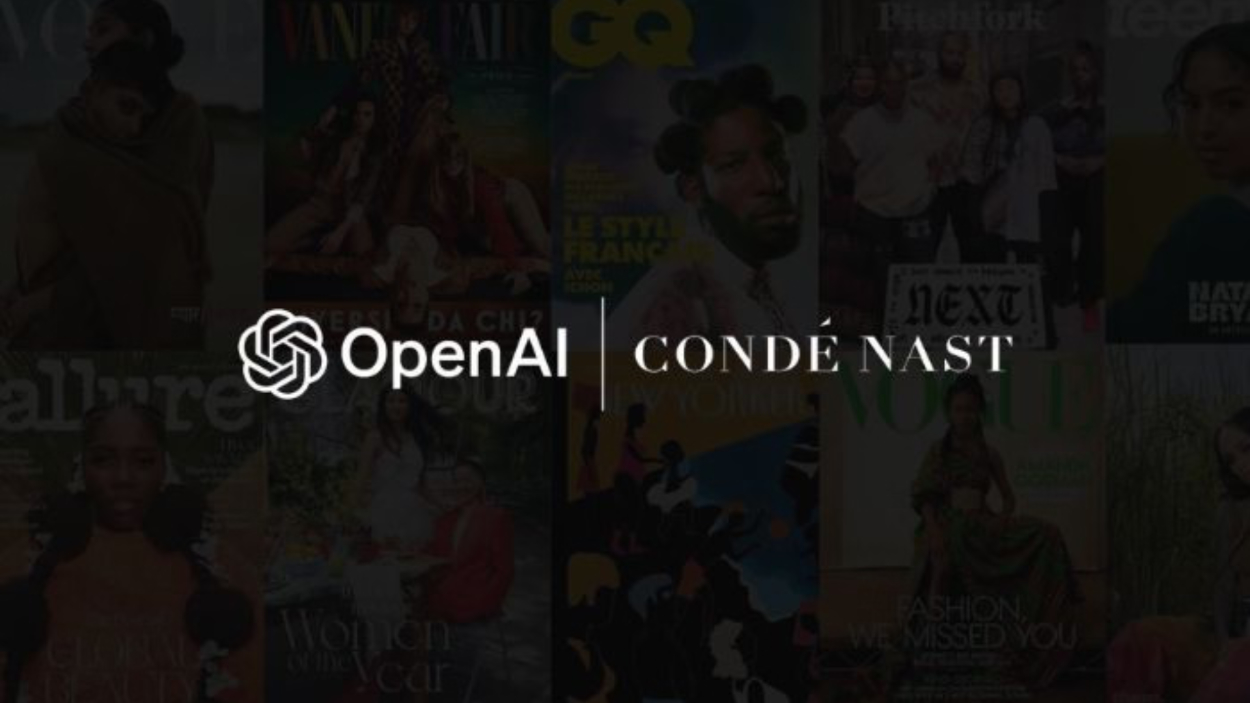
OpenAI – which is largely backed by Microsoft – has signed similar deals with an expanding list of publishers including Associated Press, Axel Springer, The Atlantic, Financial Times, TIME, and Vox Media. These agreements provide OpenAI with access to the publishers’ extensive text archives, which are essential for training large language models like ChatGPT and for retrieving real-time information. Chief Operating Officer at OpenAI, Brad Lightcap, has said that the company is collaborating with Condé Nast and other publishers to “ensure that as AI plays a larger role in news discovery and delivery, it maintains accuracy, integrity and respect for quality reporting.”
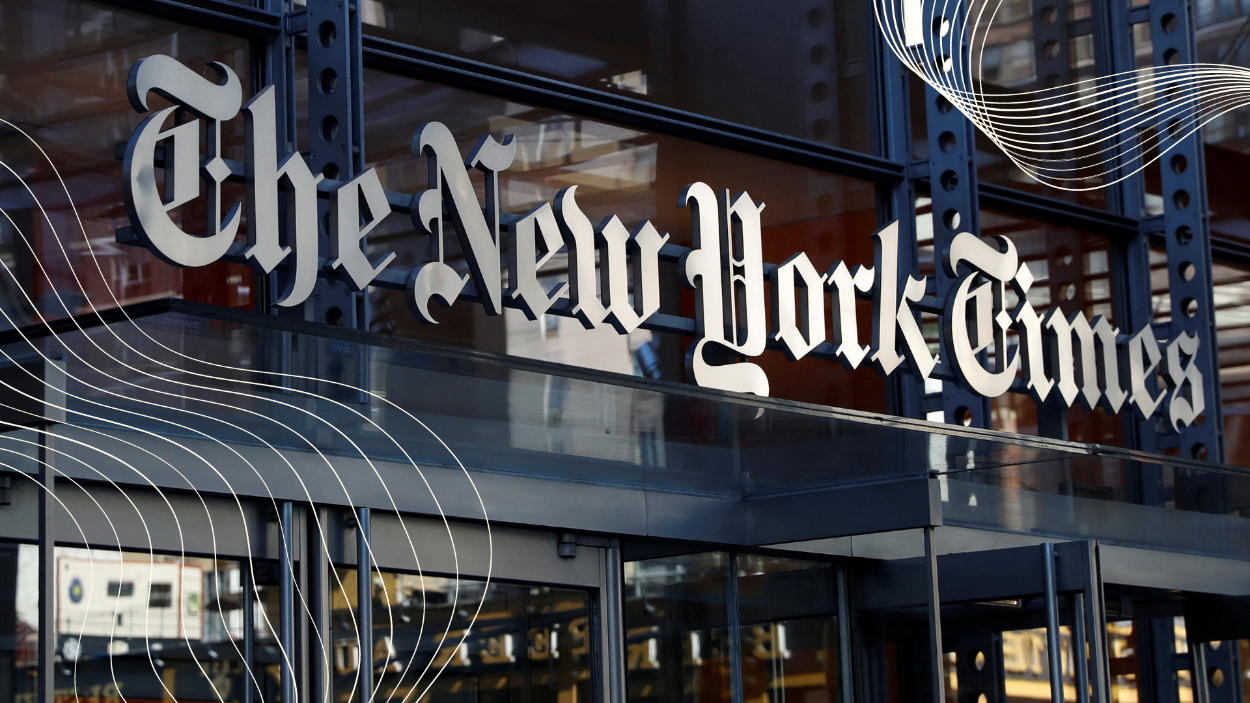
On the other end of the deal, Condé Nast CEO, Roger Lynch has said that the deal will help recover some of the revenue that technology companies have taken from publishers in recent years. He wrote: “Generative AI is rapidly changing ways audiences are discovering information. It’s crucial that we meet audiences where they are and embrace new technologies while also ensuring proper attribution and compensation for use of our intellectual property. This is exactly what we have found with OpenAI.” He adds that “Over the last decade, news and digital media have faced steep challenges as many technology companies eroded publishers’ ability to monetise content, most recently with traditional search. Our partnership with OpenAI begins to make up for some of that revenue, allowing us to continue to protect and invest in our journalism and creative endeavours.”
But not all media houses feel this way. The New York Times, The Intercept Media, Raw Story Media, and AlterNet Media have ongoing litigation against OpenAI for using their articles. (You can read our analysis on The New York Times case here.) Even less convinced? The writers who create the content training the AI.

In May, the unionised members of The Atlantic Editorial and Business and Technology units (who are represented by the NewsGuild of New York) were “deeply troubled by the opaque agreement The Atlantic has made with OpenAI. In particular, their management’s “complete lack of transparency about what the agreement entailed” and how it would affect their work. In their statement, the members called for management to “immediately make the terms of the deal available to Atlantic staffers and then convene an all-hands meeting to answer our questions honestly, clearly, and without spin.”
The call is again being made. “The growing encroachment of AI on journalism is a significant concern for our NewsGuild of New York members,” said Susan DeCarava, President of NewsGuild. “We expect Condé management to be transparent with us about how this technology will be used and the impact it may have on our work. We are seeking additional details on Condé’s OpenAI deal to ensure our members’ rights are protected.” And this isn’t coming out of nowhere. As per a report by employment firm Challenger, Gray, and Christmas, the wider media industry had 20,324 job cuts in 2023, the highest since 2020, when 30,211 cuts were announced.
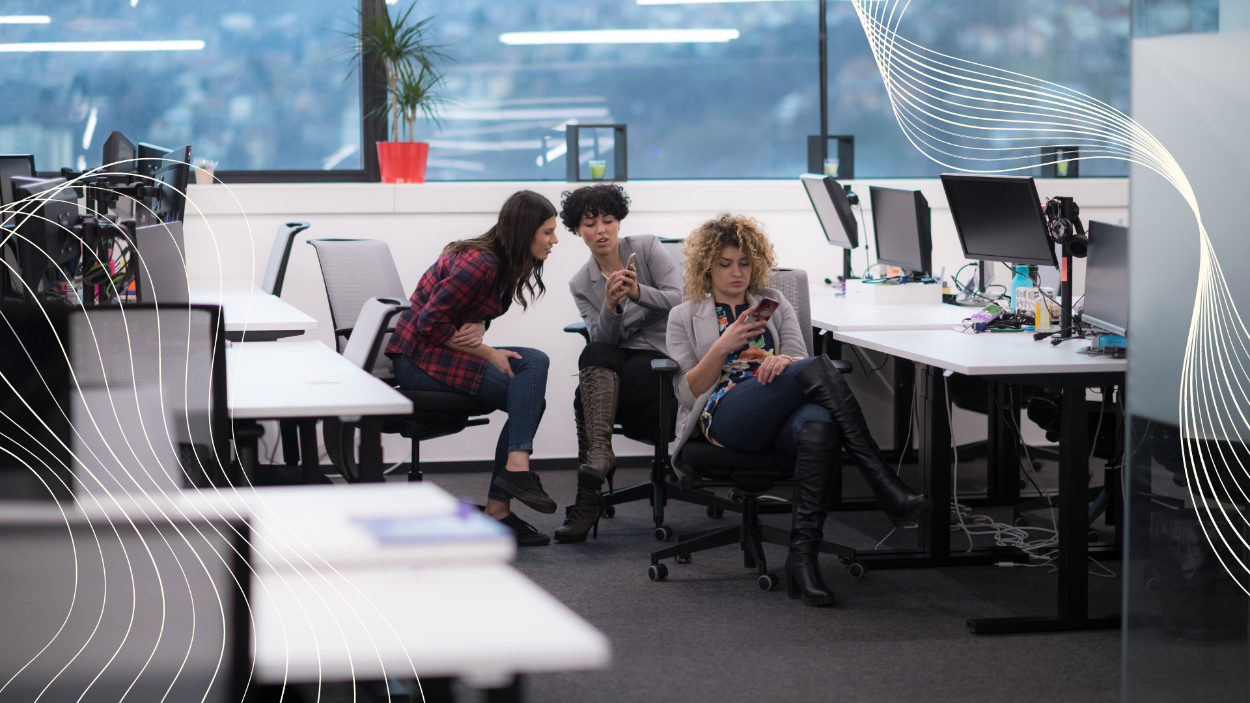
Similar to the fashion industry’s adaptation to technological change, which requires overhauling outdated business models and methods, there will undoubtedly be benefits when it comes to these kinds of licensing agreements in the long-term. But the short-term transition is likely to be difficult, with a lot of push and pull between opposing powers.
Robotics and automation: for brands and retailers of all shapes and sizes?
This week, IKEA unveiled the next phase of its drone technology initiative, introducing an advanced AI-powered system designed to be integrated into various fulfilment units, including distribution centres. A key update is that the drones will now operate 24/7, working alongside human employees to count inventory and identify misplaced items. Previously, the drones only operated during non-business hours.
This decision to expand drone deployment comes after a successful year of testing at IKEA’s Distribution Centre in Winterslag, Belgium. Ikea’s current fleet includes over 250 drones operating in 73 warehouses across nine countries. Now, IKEA plans to roll out its AI-enhanced drones to additional distribution centres in Europe and North America. According to the company, this expansion will help “lessen the ergonomic strain on human employees, allowing them to concentrate on lighter and more engaging tasks.”
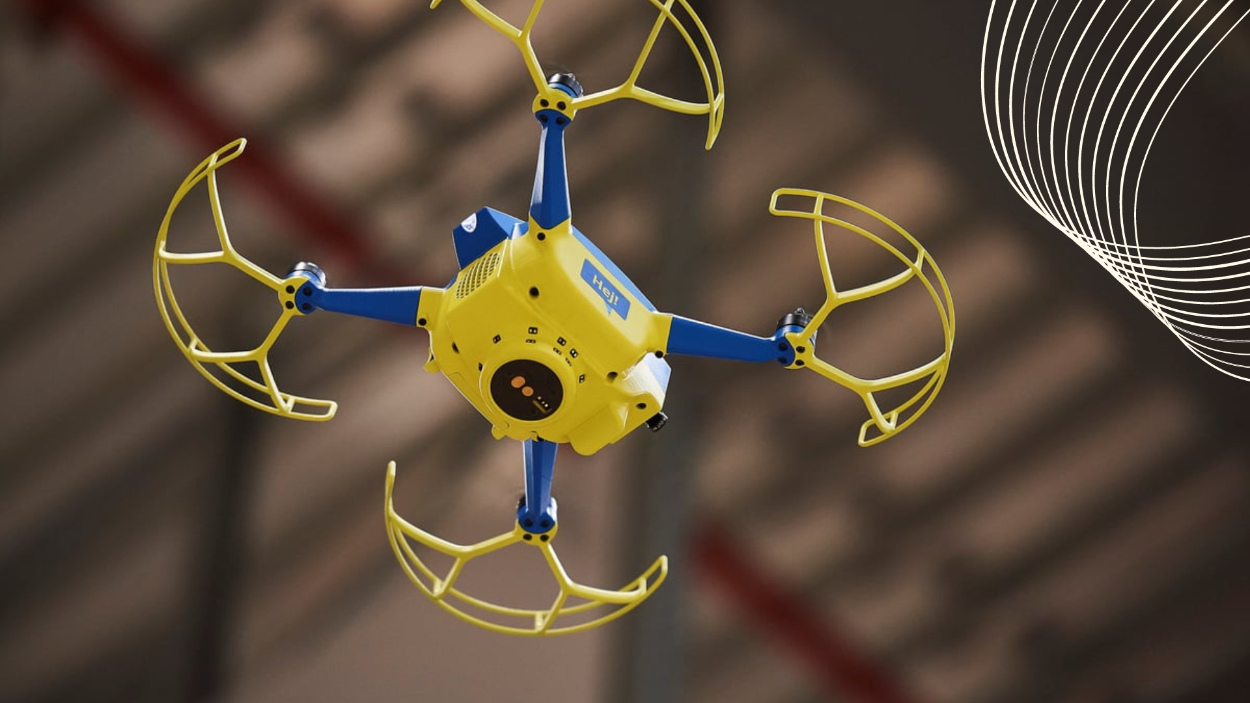
“The IKEA drones use an artificial intelligence-based algorithm to identify and photograph product storage locations,” stated Parag Parekh, Global Chief Digital Officer for IKEA Retail (Ingka Group). “In addition, drone flights are pre-scheduled, utilising a custom indoor positioning system to navigate higher levels of storage locations (for levels 3 and up). Equipped with obstacle detection capabilities, these drones can avoid collisions by rerouting their paths.”
With these advantages, should brands and retailers of all sizes be investing in robotics?
The biggest names in retail are all over it already. Amazon uses more than 750,000 robots in tandem with its human employees to fulfil orders. And in April, Walmart announced the roll out of 19 autonomous forklifts in four of its distribution centres. The forklifts transfer pallets to an area where an automated system takes over, cataloguing and sorting the contents. The company noted that while the human employees no longer handle the unloading manually, they still play a crucial role in determining the most efficient way to unload the pallets.
Then there is Skims, the US$4 billion shapewear and apparel brand co-founded by Kim Kardashian, who has integrated autonomous mobile robots from Locus Robotics to enhance its warehousing and fulfilment processes. Similarly, brands like Nike and Uniqlo are also using robotics to keep up with increased demand from online sales.
Typically reserved about revealing the specifics of their warehouse operations, e-commerce giant Shein is likely employing various types of robotics in their daily processes and is expected to extend their use further. This week, the Guangzhou City Planning and Natural Resources Bureau announced that Shein had received permits for its 3.69 billion yuan (US$514 million) supply chain headquarters project in Zengcheng District, China. The company secured 25 construction approvals for the project’s initial phase, which will span at least 800,000 square metres. With these approvals, Shein plans to establish an advanced warehousing and logistics distribution park, integrating functions like warehousing, stockpiling, picking, distribution, delivery, and settlement. This supply chain centre is expected to become a key pillar supporting Shein’s global sales operations.
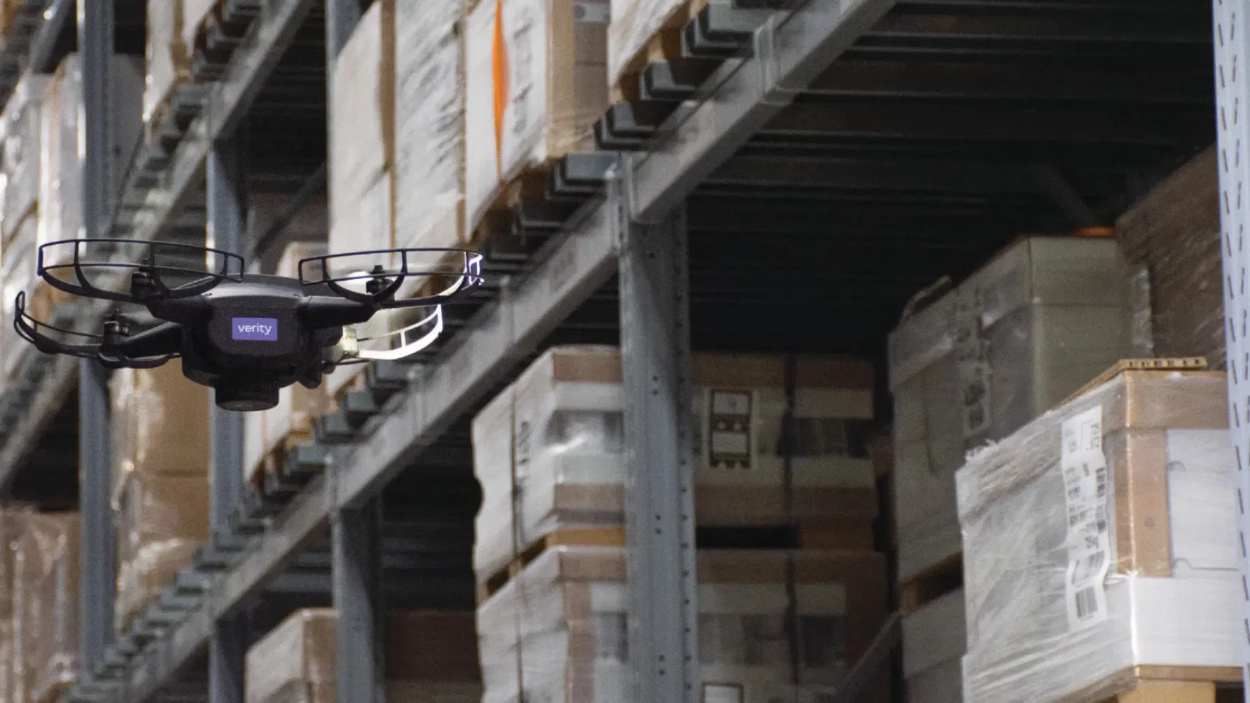
But when it comes to smaller fashion companies and their use of robotics and automation, so far, there has not been as much commotion.
One obvious reason for this is that the robotics industry has traditionally been dominated by large, complex machines that require significant up-front investment and in-house expertise to keep them running. Alongside this, small-scale brands and manufacturers may produce a wide variety of products in limited quantities, but reprogramming traditional robots to switch between tasks isn’t simple. It can take days or even weeks to reprogram them, assuming the capability exists in-house. While robots can drive efficiency, they often sacrifice flexibility, which is crucial for businesses that rely on diverse production. It’s a challenging balance, particularly for companies that depend on variety.
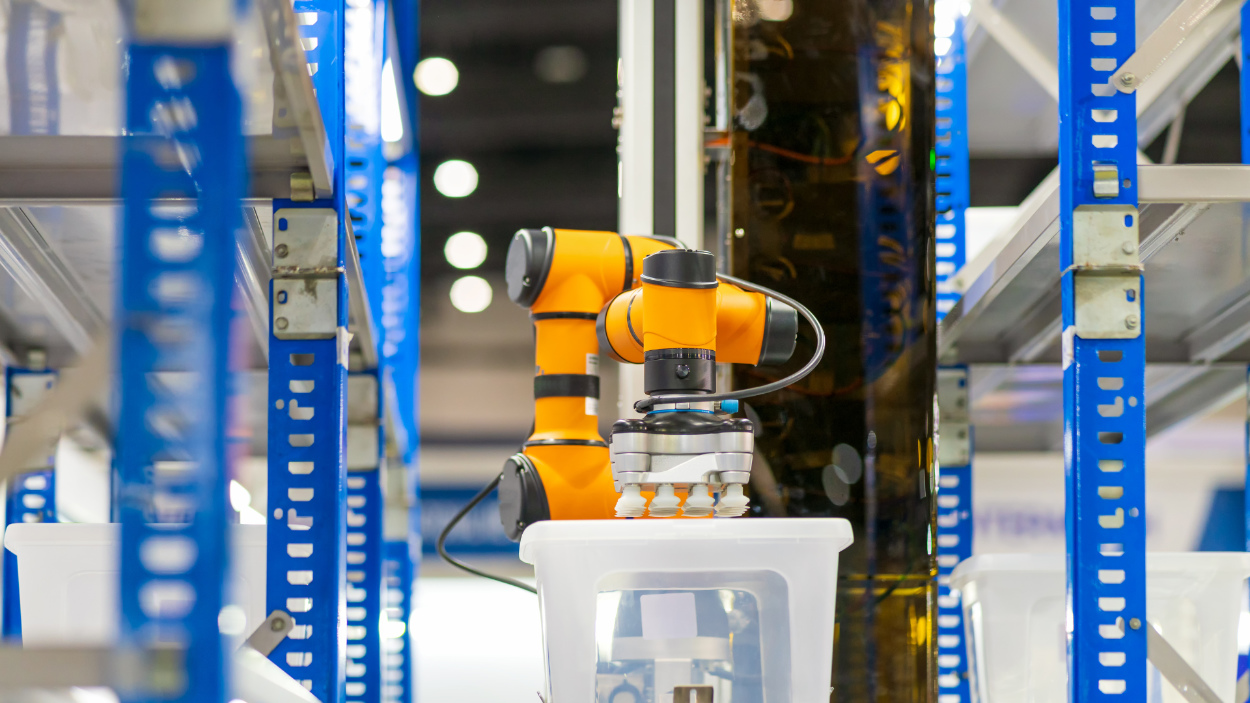
But the latest advancements in technology are unlocking new possibilities for smaller businesses. Compact and adaptable collaborative robots (cobots) can now perform a wide variety of tasks, from machine tending and welding to packaging, palletising, and screw-driving. New software allows for rapid reconfiguration, finally making automation appealing to manufacturers with high-mix, low-volume production needs.
For basic automation needs, cobots typically range from US$8,000 to US$20,000. Specialised cobots equipped with advanced software, heavy-duty payloads, and multiple axes for precision can cost around US$35,000, with some exceeding US$100,000. Although not exactly cheap, cobots do provide the performance needed for efficient task execution that can be useful for fashion businesses, and can offer a valuable entry point into robotics and automation, allowing them to learn and build upon their initial investment over time.
The best from The Interline:

Kicking off this week, Lectra’s Product Marketing Director on leveraging AI to revolutionise the fashion value chain, enhancing decision-making, transparency, and innovation.

Next, our resident News and Features Editor on how (and how quickly) the next generation of talent is being prepared for a transformed working environment.

And closing out the week, imki’s CEO & CIO on the transformative potential of AI in the fashion industry, and the balance between innovation and preserving artistic heritage.
